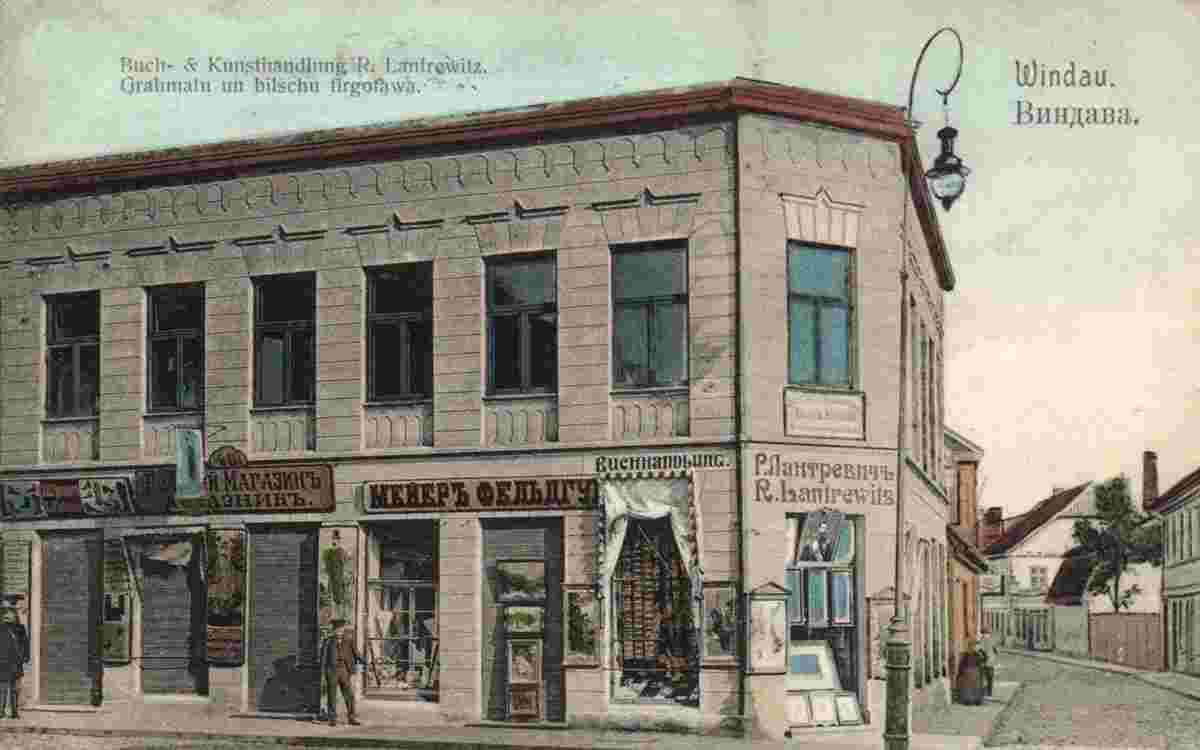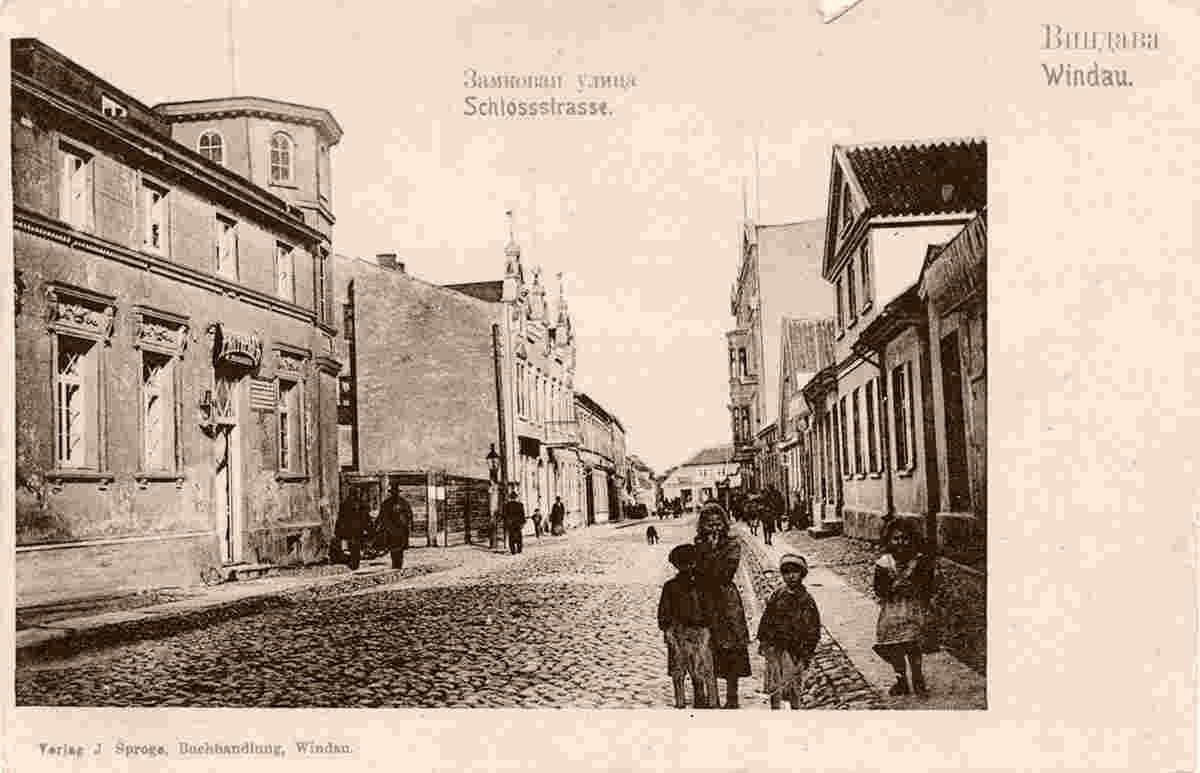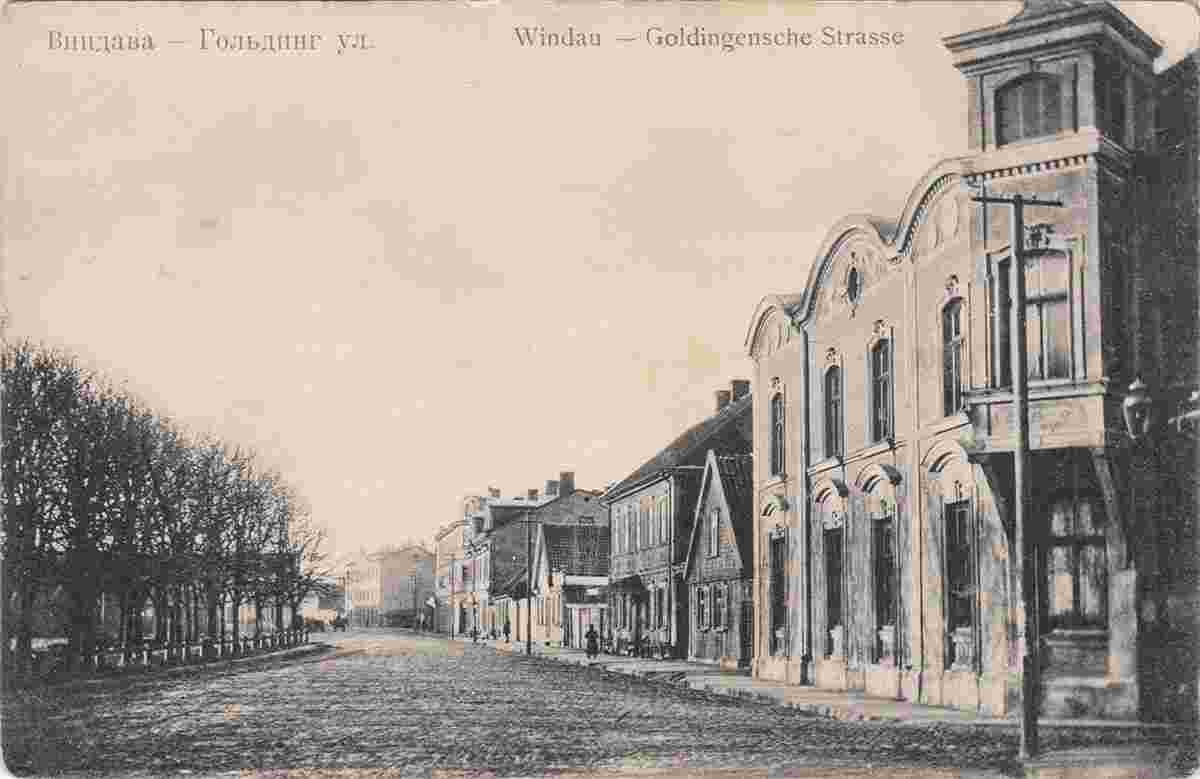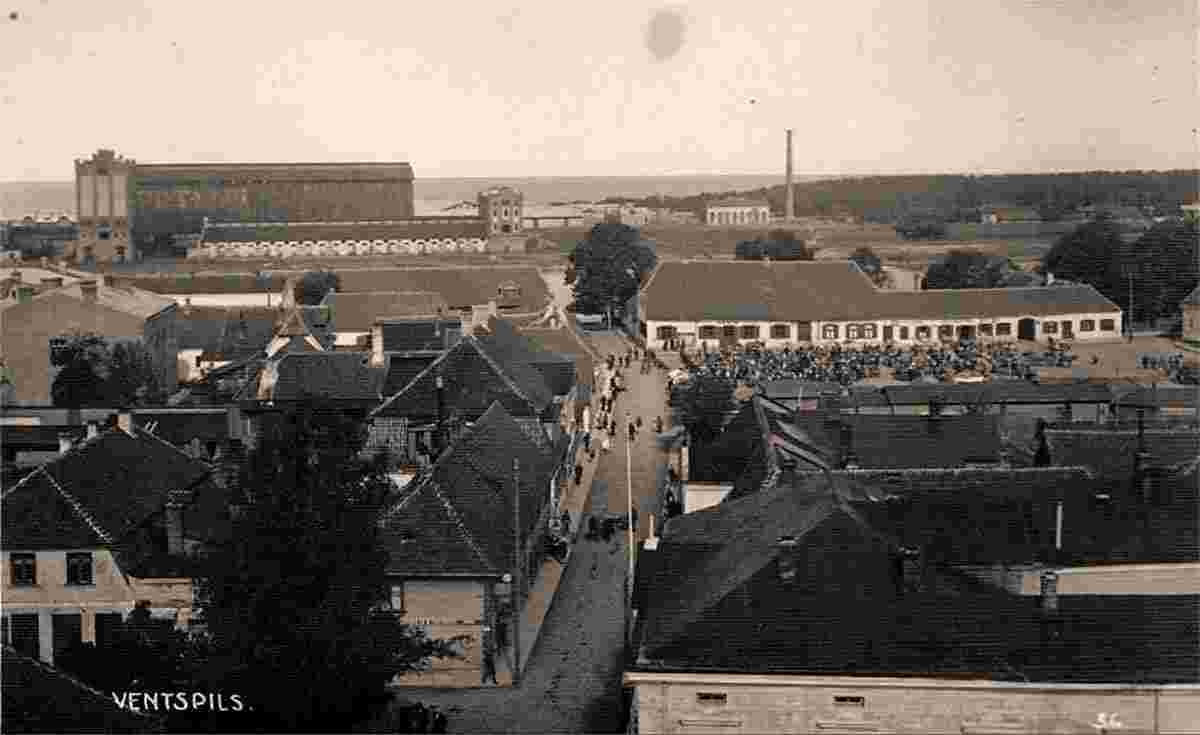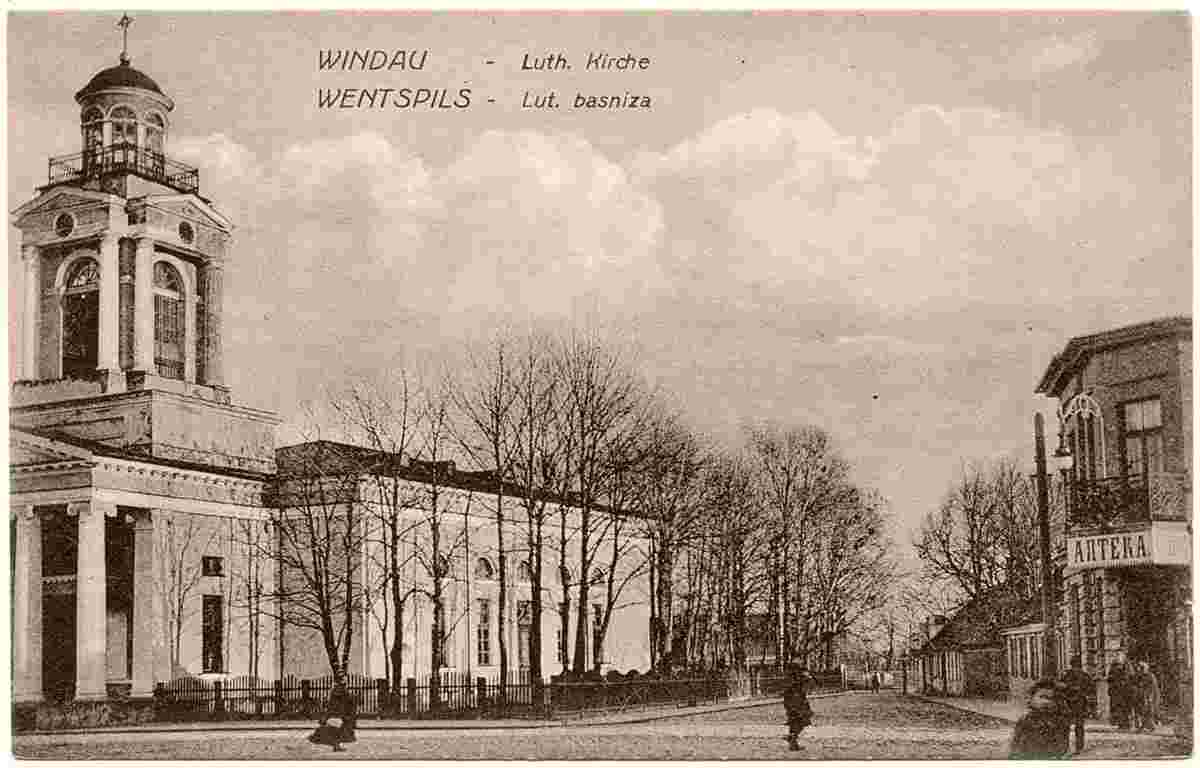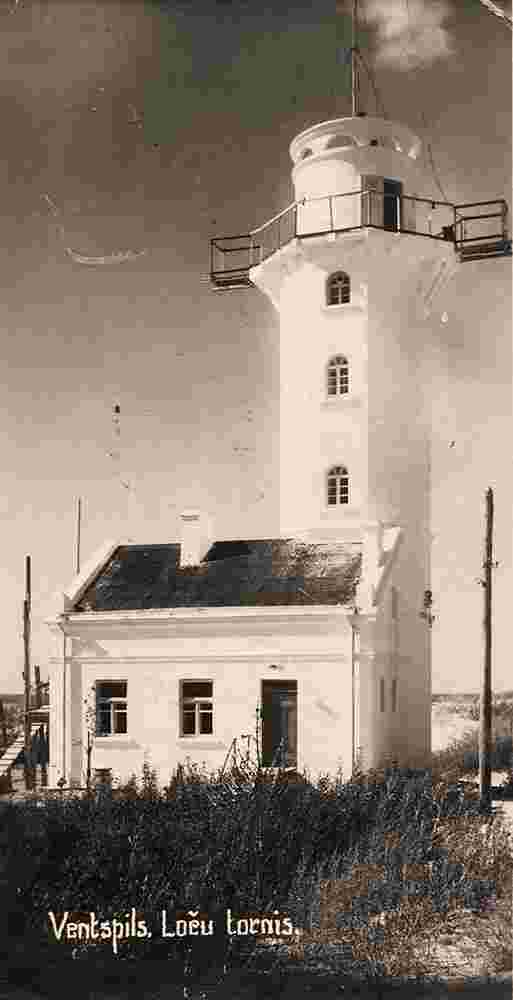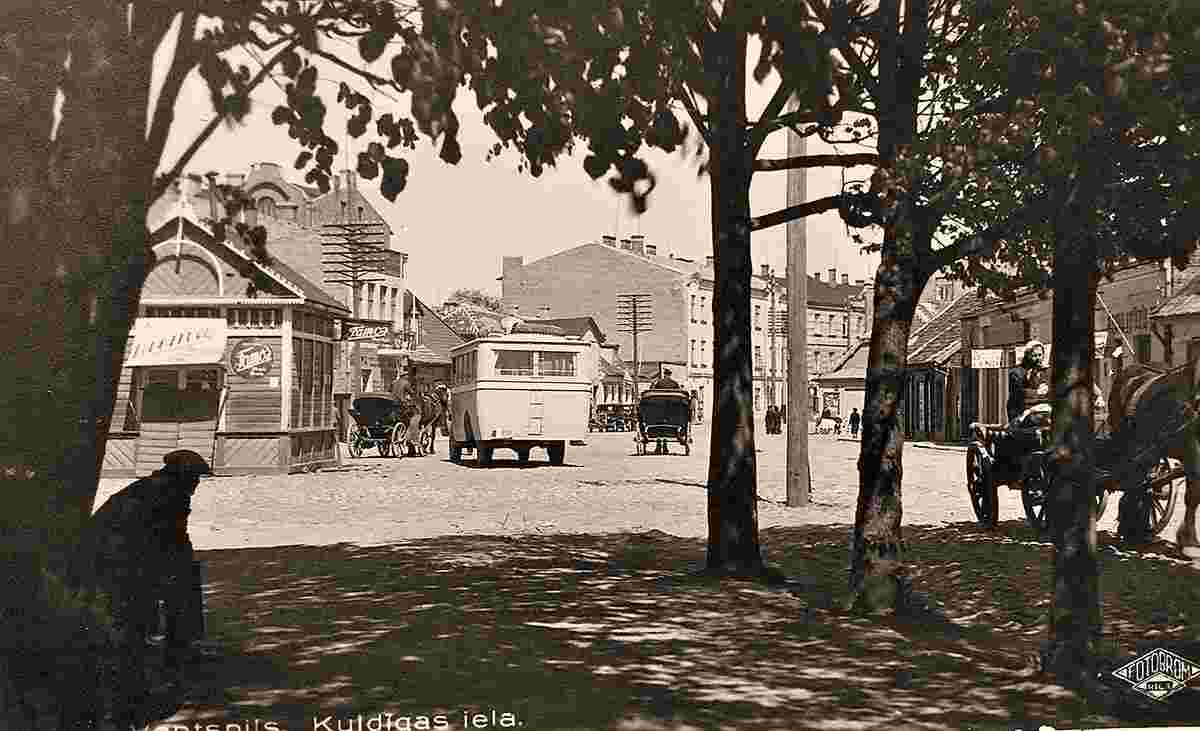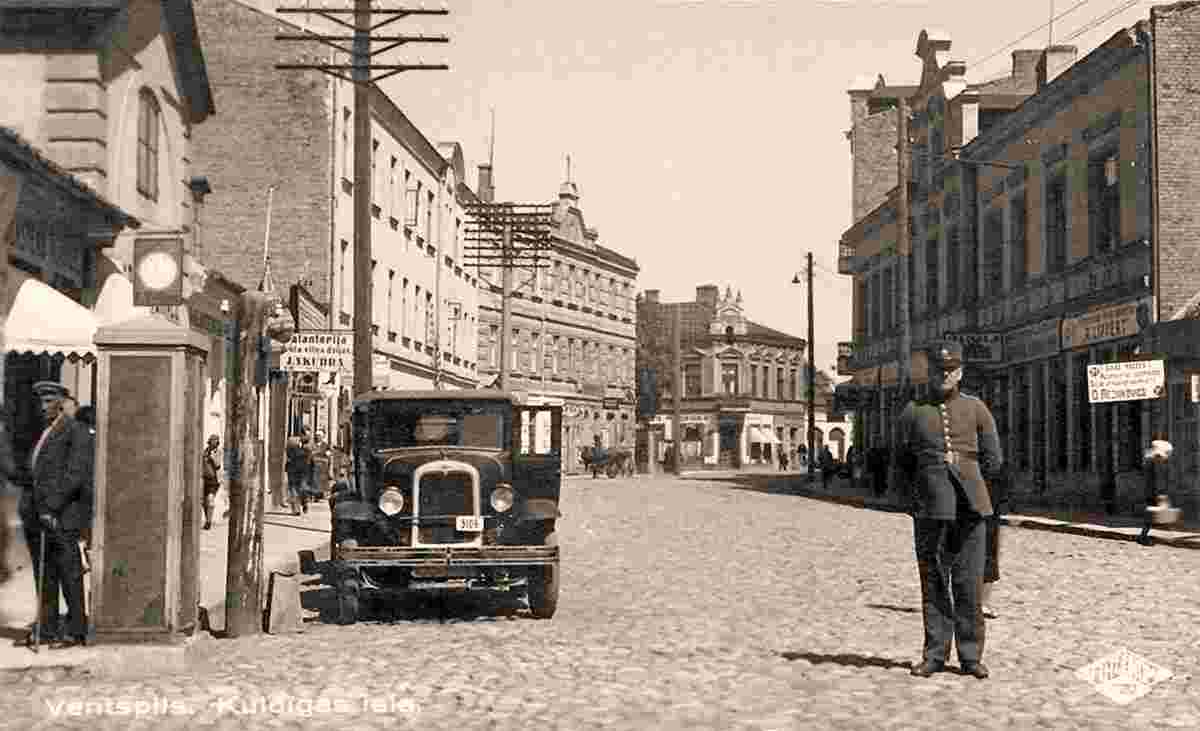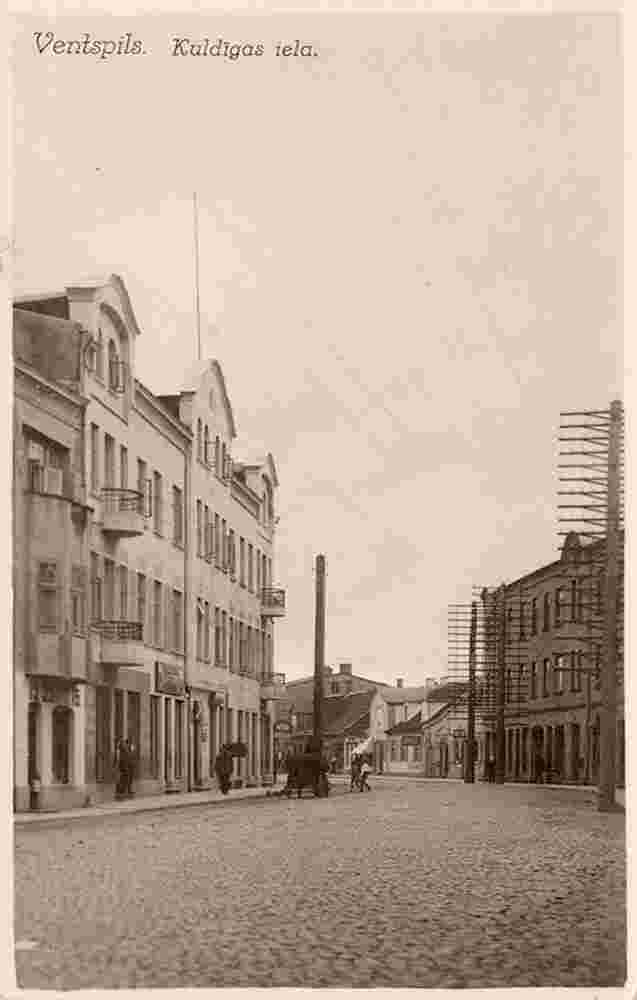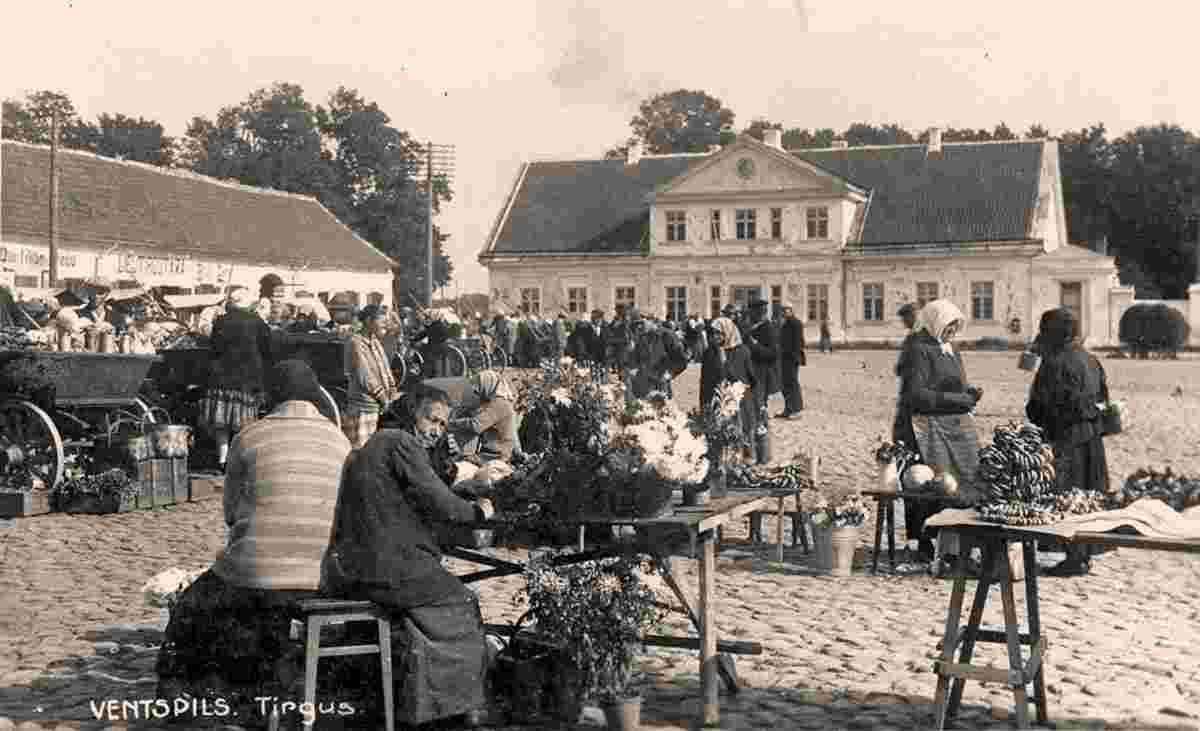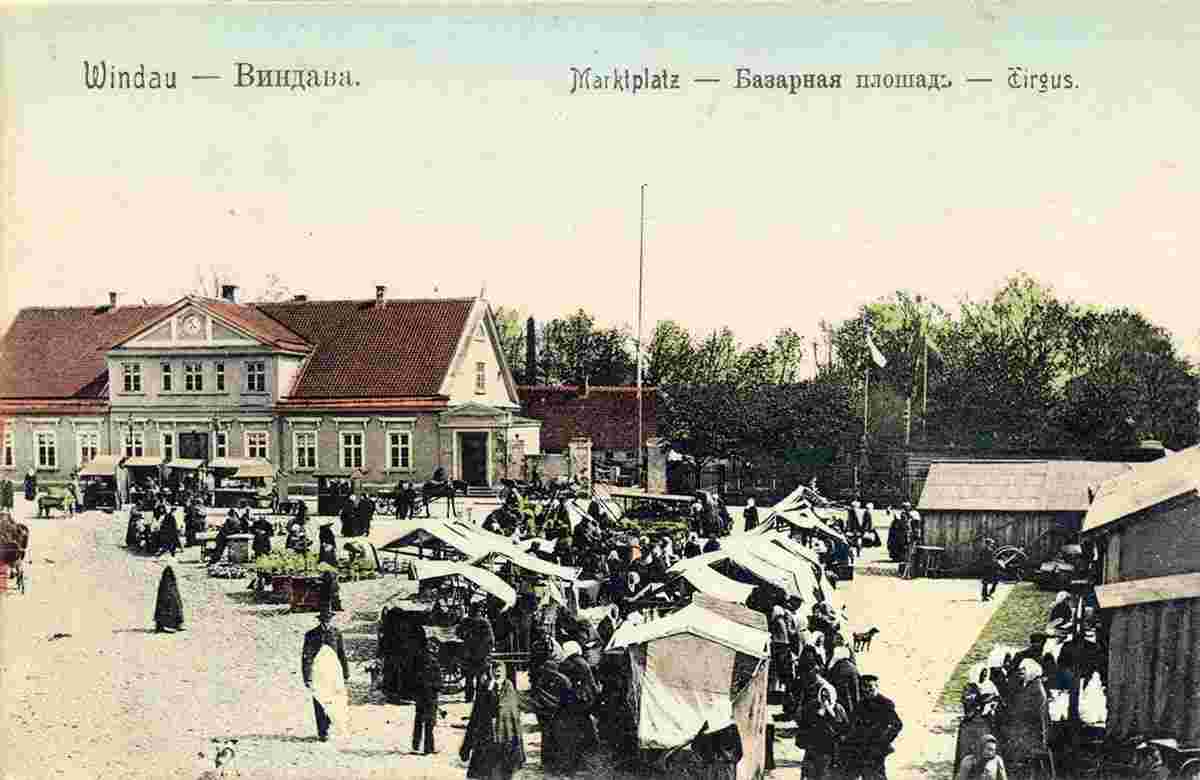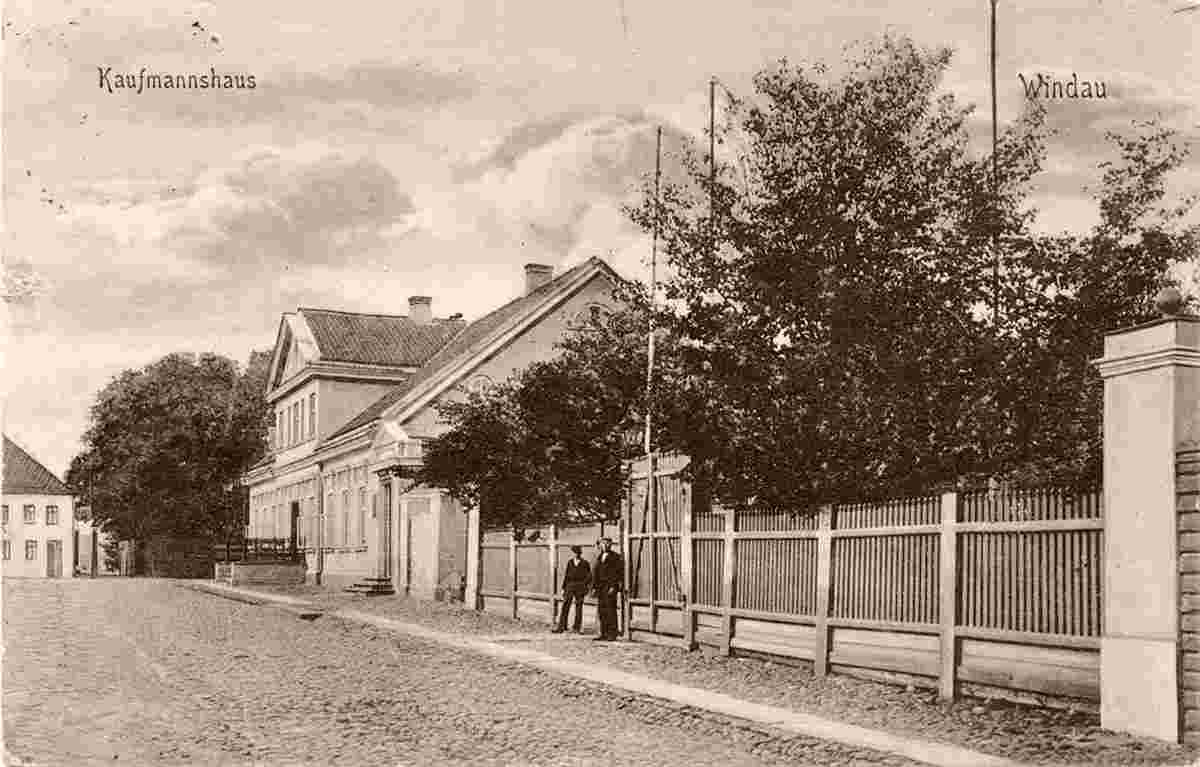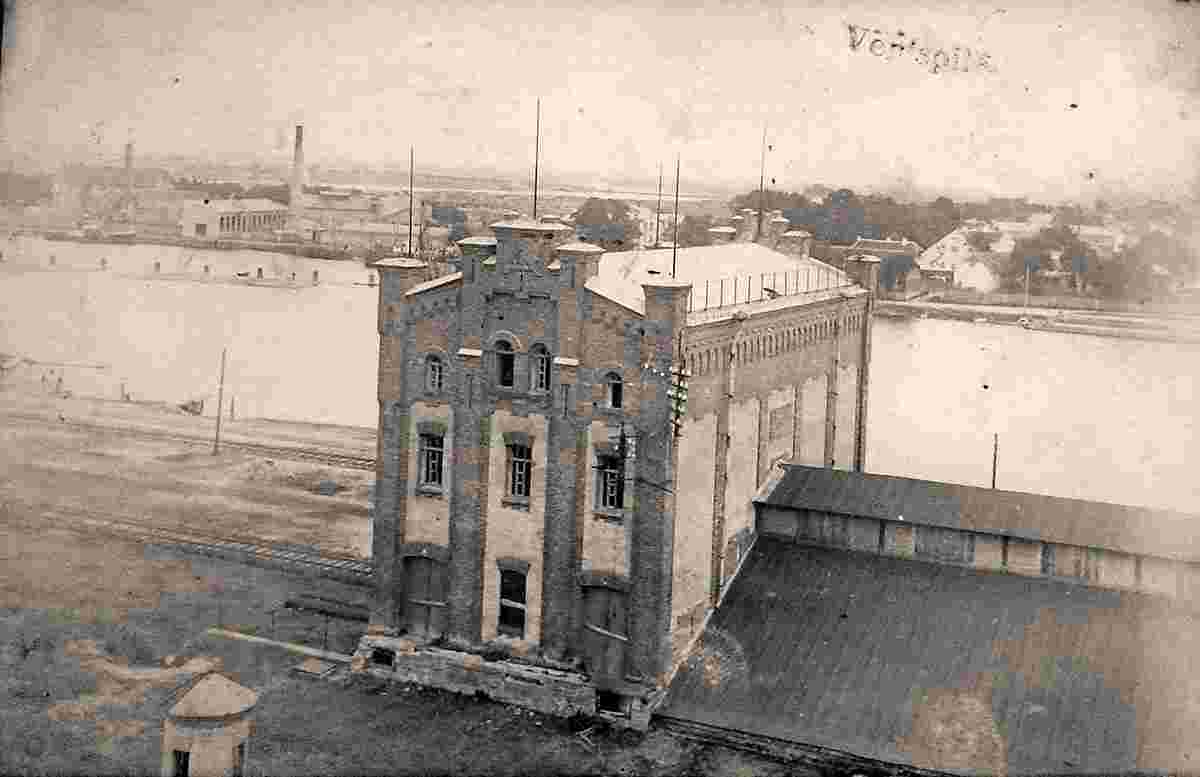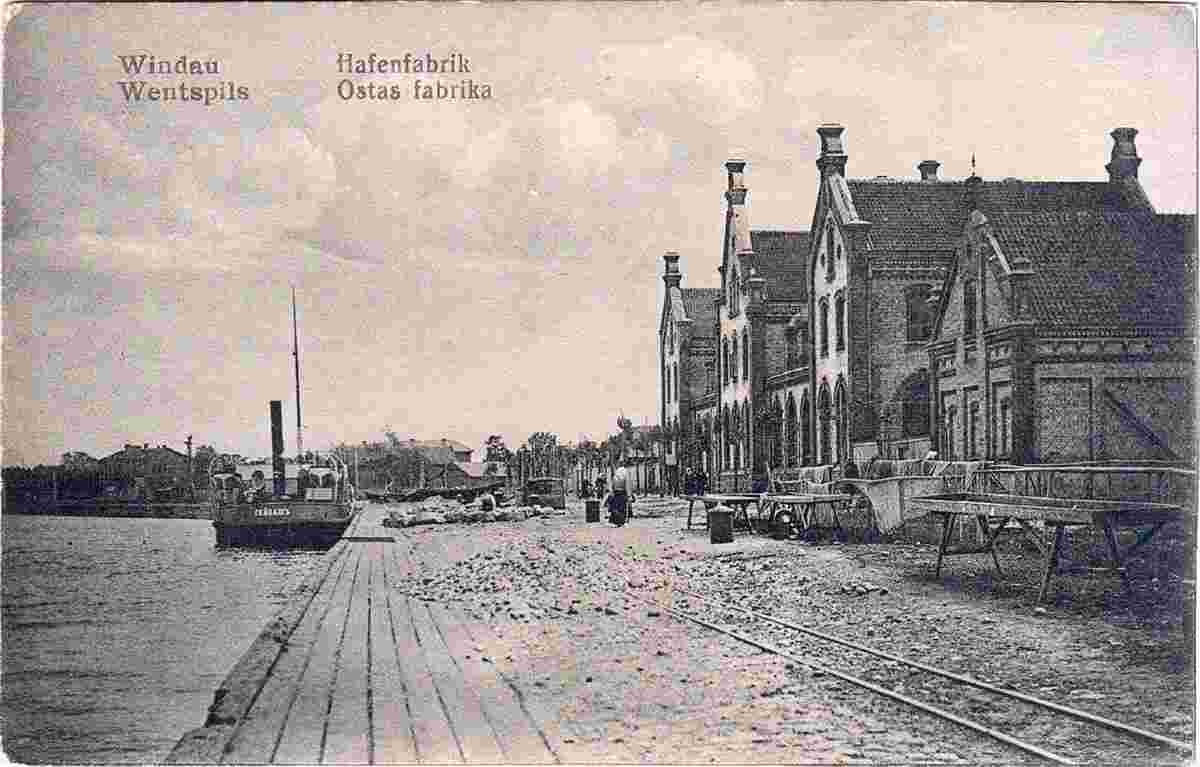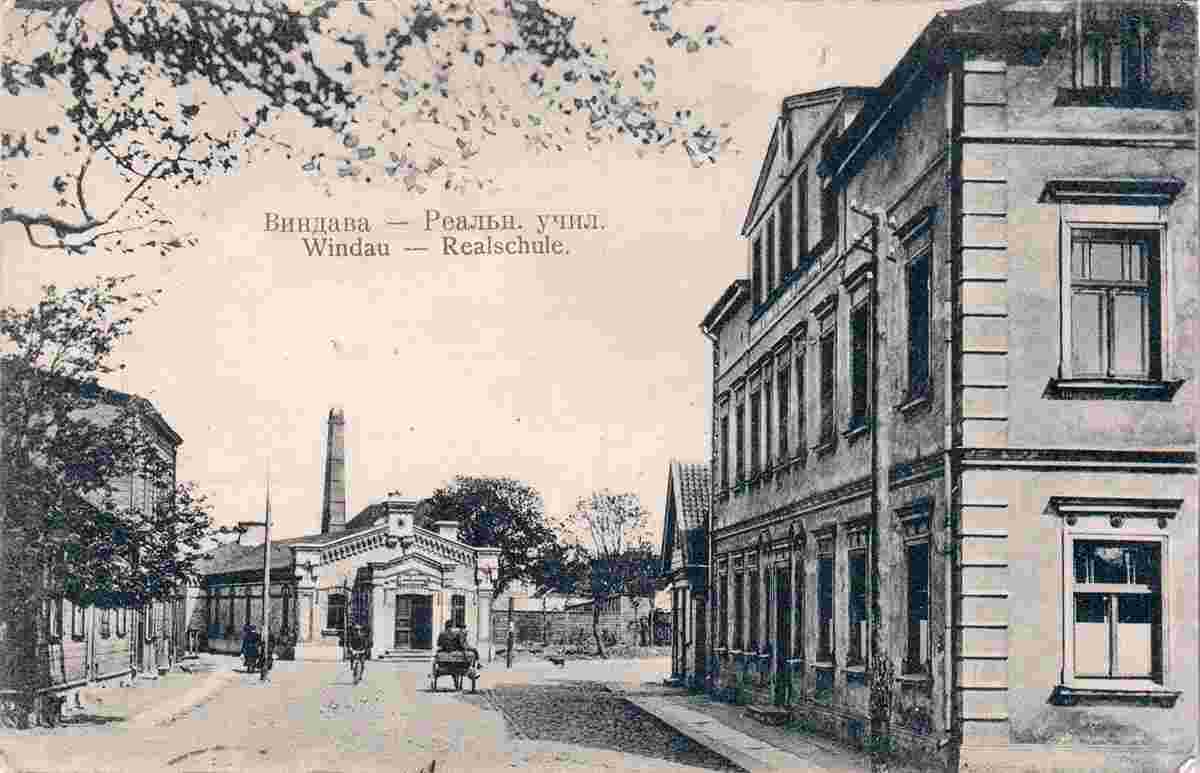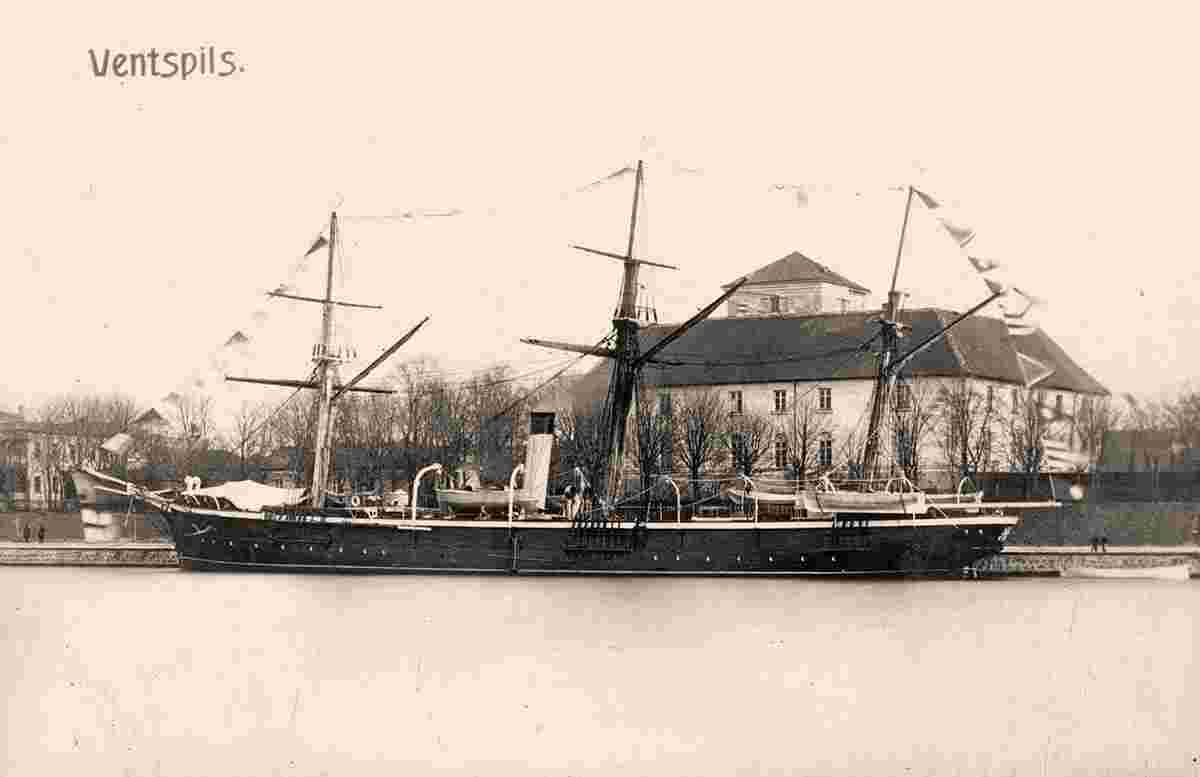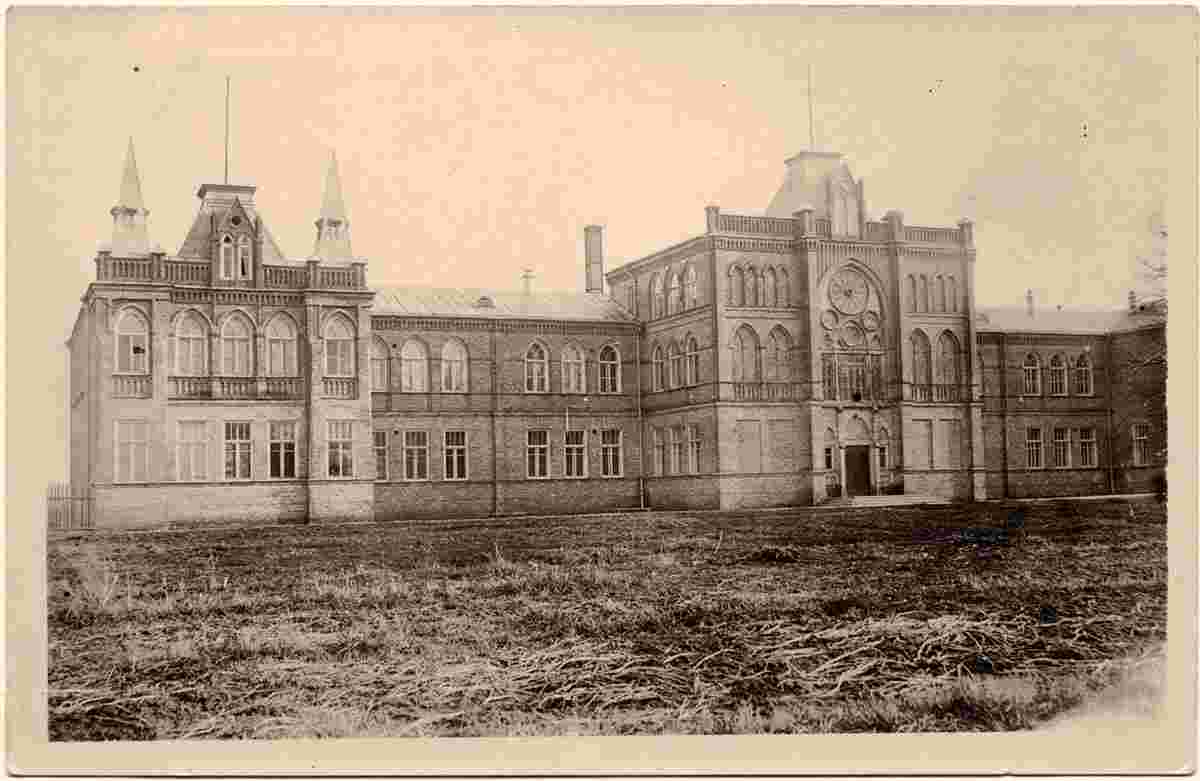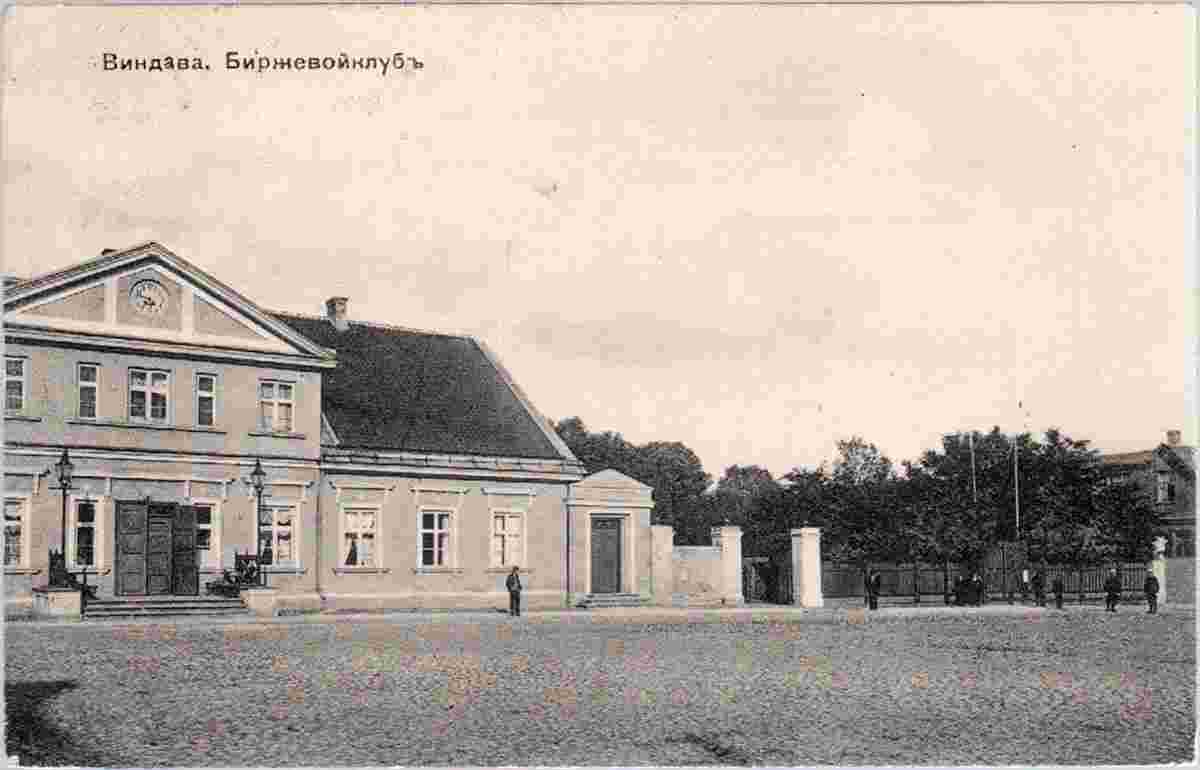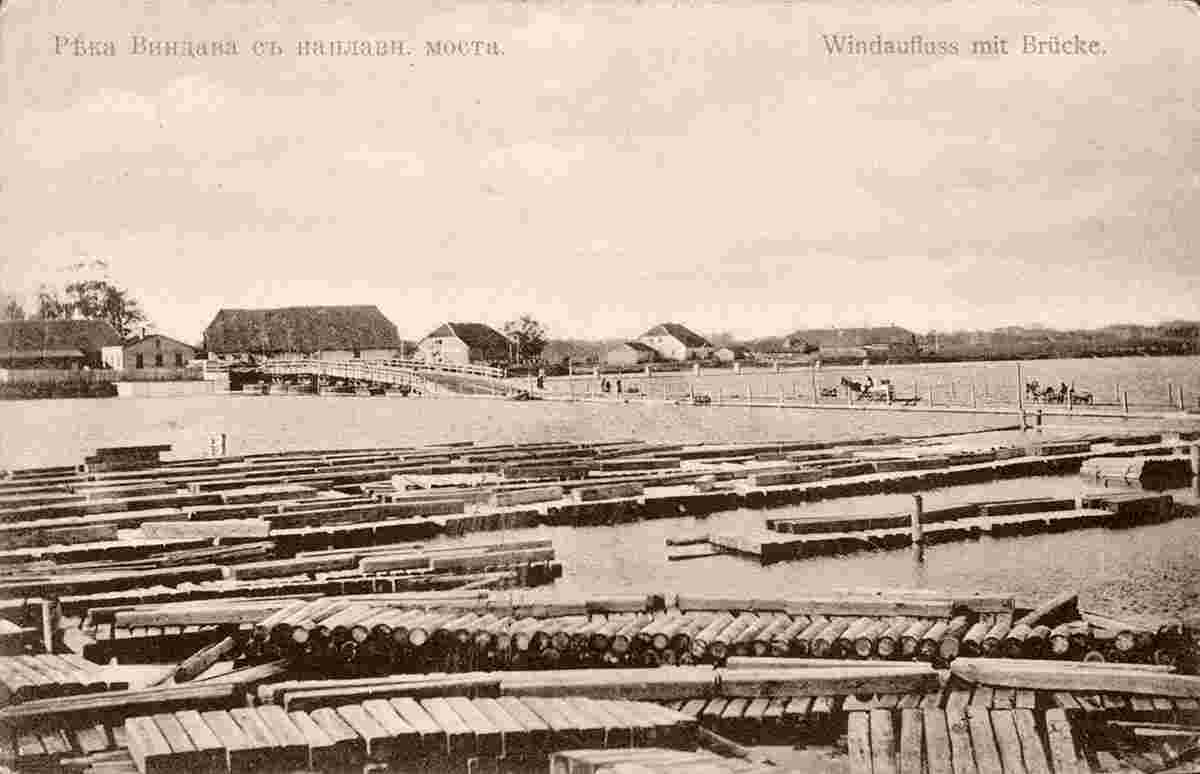Historical and old photos of Ventspils (german - Windau)
HistoryVentspils developed around the Livonian Order Ventspils Castle, built along the Venta River. It was chartered in 1314 and became an important mercantile city of the Hanseatic League. As part of the Duchy of Courland, Ventspils blossomed as a shipbuilding centre. 44 warships and 79 trading ships were built in the town, and it was from Ventspils that the Duke's fleet set out to colonize Gambia and Tobago. Metal, amber, and wood-working shops also became important to the city's development. During the Polish-Swedish War and the Great Northern War, Ventspils was destroyed, and in 1711 a plague wiped out most of the remaining inhabitants. After the Third Partition of Poland in 1795 Ventspils fell under the control of Russian Empire. It was not until about 1850 that shipbuilding and trade became important again. The port was modernized in the 1890s and connected to Moscow by rail. It became one of Imperial Russia's most profitable ports, by 1913 turning a yearly profit of 130 million rubles. The population soared as well, growing from 7,000 in 1897, to 29,000 in 1913. During the German occupation from 1915–1919, the population decreased almost by half, though some returned home during the First Republic of Latvia (1918–1940). In 1939, the Red Army established a base in Ventspils. Under Soviet rule, an oil pipeline was built to Ventspils, and became the USSR's leading port in crude oil export. thirty kilometres (19 miles) north of Ventspils is the ex-Soviet radioastronomy installation VIRAC (Ventspils Starptautiskais radioastronomijas centrs or Ventspils International Radio Astronomy Centre). The existence of the Centrs was unknown to most Latvians until 1994. After independence, the Latvian government began a city-beautification process to make the city more attractive to tourists. In 2004, Ventspils was a host city for a multi-national (United States, United Kingdom, Poland, Sweden, Russia, Latvia, Denmark, Finland, Norway) naval exercise called Baltic Operations XXXIII (BALTOPS). The force was led by the guided missile cruiser USS Anzio and the destroyer USS Cole. The US vessels were the first American warships to visit the port of Ventspils since Latvian independence was declared. Origin: en.wikipedia.org | |||||||||||||||||||||
 |
Historical and old photos of Ventspils (german - Windau)
Ventspils vēsturiskās un senās fotogrāfijas (vāciski - Windau) |
| Main page • Countries of Europa • Cities of Latvia |
| Robinson Rd, CB 13862 Nassau, NP, The Bahamas |
